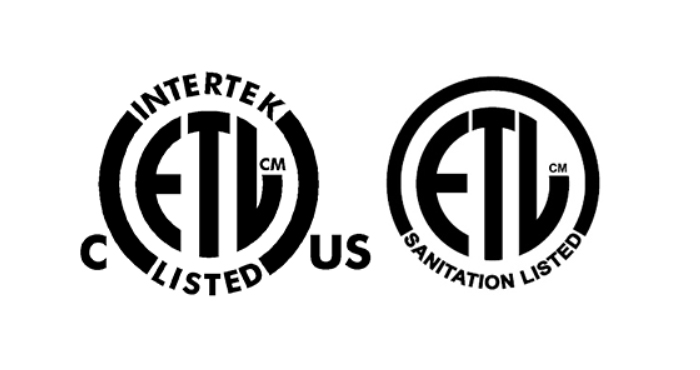Electric patio heaters are a popular way to combat chilly temperatures during the winter. They’re versatile and can be used to warm up indoor and outdoor spaces all year round, not just in the winter. There’s also no expensive installation because electric patio heaters plug into a standard electrical outlet. But before you buy one, it’s important to consider what safety certification is required for electric patio heaters. Here are some details you may not be aware of.
What is a safety certificate?
Safety certificates let consumers know that the product they are buying has been tested and passed safety inspections. It is required by law for importers to ship their products all over the world. Depending on where you live and do business, you’ll be required to have one of these certifications to sell your product. Safety certificates let buyers purchase products with confidence.
Generally, when importing goods, there are safety certifications that indicate a certain product can be used for the listed purposes and for a predetermined amount of time. For example, if you live or do business in Europe, you would see products tested by SGS Labs. It is referenced by the European regulation IEC60335 for household appliances.
SGS-CSTC
Outdoor patio heaters must match and be approved by SGS or another good reputable third-party lab to be sold in Europe. SGS-CSTC Standards Technical Services Co., Ltd. must be on the sample of the above-mentioned product in accordance with the provisions.

SGSCE
“CE” is an abbreviation meaning that the product meets the requirements for European conformity. This mark is required for goods manufactured or sold in the EEA (European Economic Area). This marking means that the product may be freely sold in any part of the European Economic Area, regardless of where it was produced. The marking consists of the CE logo and a 4 digit ID number. Another marking you may see is “LVD,” which means Low Voltage Directive in reference to household heater regulation in the EEA.
*EMC means directive 2014/30/EU for classifying household heaters.
*CE MARK including LVD & EMC
The newest CE (LVD ) regulation for household heater as below:
EN 60335-2-30: 2009 + A11: 2012 + A1: 2020
+ A12: 2020
EN 60335-1: 2012 + A11: 2014 + A13: 2017
+ A1: 2019 + A14: 2019 + A2: 2019
EN 62233: 2008
The newest CE (EMC) regulation
EN 55014-1: 2017+A11:2020
EN 61000-3-3: 2013+A1: 2019
EN |EC 61000-3-2: 2019.
EN 55014-2: 2015
GS: Germany request MARK
UKCA: UK request MARK
SAA: AU/NEW ZEALAND request MARK
CB: lEC SYSTEM FOR MUTUAL RECOGNITION OF TEST CERTIFICATES FOR ELECTRICAL EQUIPMENT (IECEE) CB SCHEME
SII: Israel MARK
Above GS.SAA.UKCA.SII both are the same IEC system, meaning the manufacturer could be using CB certificate and report to change above mark, without the need for additional testing.
Below is CB report including all different SAA.UKCA.SII difference:
- IEC 60335-2-30:2009,
- IEC 60335-2-30:2009/AMD1:2016
- IEC 60335-1:2010, IEC 60335-1:2010/AMD1:2013,
- IEC 60335- 1:2010/AMD2:2016
National Differences:
EU Group Differences, AU, NZ, ZA, KR

About UL
UL, LLC is the mark for Underwriters Laboratories. It is recognized as the safety mark for products manufactured and sold in North America. It is typically seen on many household appliances and products that generate heat. The company was established in 1894, and is currently headquartered in Northbrook, Illinois. UL is one of several companies approved by OSHA (the Occupational Safety and Health Administration) to perform safety testing. It is listed by OSHA as one of their nationally recognized testing laboratories.

What is ETL?
ETL stands for Electrical Testing Laboratories. This company is a division of Intertek Testing Laboratories, and is responsible for testing and safety regulations for the UK. ETL tests parts and components of a wide range of products to make sure that they comply with established standards. ETL makes sure that products meet the standards created by UL, but does not create any of their own standards. ETL and UL use the same testing regulations and are also seen in North America.
For example:
- ETL from testing lab: INTETEK, using regulation UL1278 for portable /wall mounted / ceiling heater.
- UL2021 for wall mounted /ceiling heater.
- UL from testing lab: UL, using regulation UL1278 for portable /wall mounted /ceiling heater.
- Whatever using ETL/UL mark for north America market, both are accepted.

Before Selling Electric Patio Heaters
Electric patio heaters are available in many stores and they’re often offered through online retailers as well. Patio heaters are available for both residential and commercial uses. It’s often a good idea to buy an electric patio heater from a trusted online retailer, because you know your item is coming directly from the manufacturer. Which safety certification is required for the U.S.? The safety certification required for electric patio heaters is UL2273: Home and Commercial Use. This certification is widely recognized and requires a three-step test. First, an indoor temperature monitor is installed in the area where the patio heater will be placed. Next, the heater is turned on and the outdoor temperature is measured. The outdoor temperature can be lowered for the test.
Electric patio heaters make for an excellent way to stay cozy when enjoying time outside during the cold months. As with any energy-efficient technology, electric patio heaters have a high upfront cost. But over time, they provide significant savings, making them well worth the upfront investment.
Sundear Products
Sundear is a manufacturer of high-quality infrared heating products. All Sundear products are approved with ETL/cETL for a US/CANADA market.
All electric patio heaters manufactured by our factory meet and pass various safety certificates, such as the ones mentioned above. In addition, many of our products are also equipped with additional safety measures, such as safety cut-off function, overheat protection and safety tilt switch. Contact us for more information about our products.


